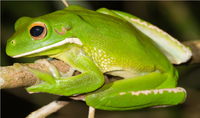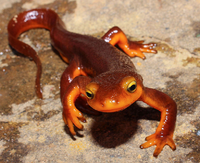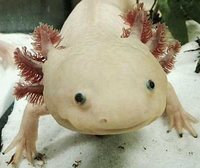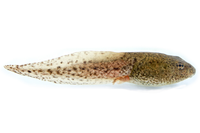Difference between revisions of "Amphibian"
(→Life Cycle) |
|||
| Line 45: | Line 45: | ||
|- | |- | ||
|'''Amphibians''' begin life in a soft egg. | |'''Amphibians''' begin life in a soft egg. | ||
| − | |The young '''Amphibians''' have | + | |The young '''Amphibians''' have gills and can only live underwater. |
|Adult '''Amphibians''' can live on land or in water. This adult is a frog. | |Adult '''Amphibians''' can live on land or in water. This adult is a frog. | ||
|} | |} | ||
Revision as of 17:26, 7 April 2019
Contents
Key Stage 1
Meaning
An amphibian is an animal with a backbone that can live underwater and on land.
About Amphibians
- There are many different kinds of amphibian, not just frogs and toads.
- Amphibians lay soft eggs underwater.
- All young amphibians have gills but as they get older some lose their gills.
Examples
| A frog is the most well known amphibian. | Newts are amphibians. |
| A Salamander is an amphibian. | An Axolotl is an unusual amphibian. |
Key Stage 2
Meaning
An amphibian is an animal with a backbone that can survive underwater and on land and lays soft eggs in the water.
Life Cycle
| Spawn | Tadpole | Adult |
| Amphibians begin life in a soft egg. | The young Amphibians have gills and can only live underwater. | Adult Amphibians can live on land or in water. This adult is a frog. |





